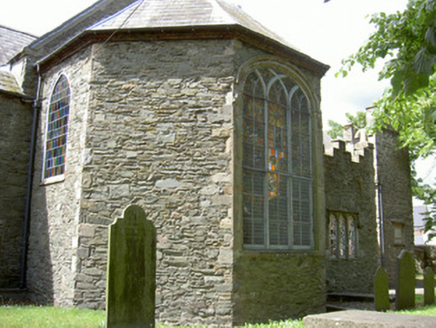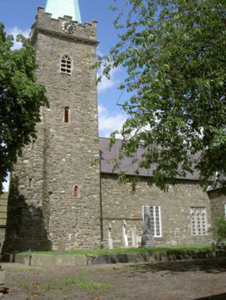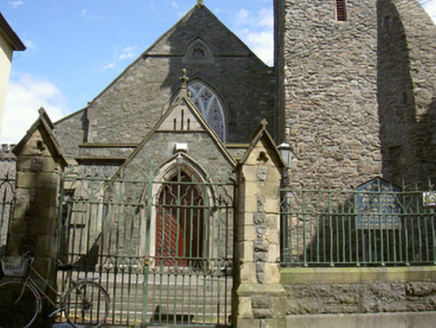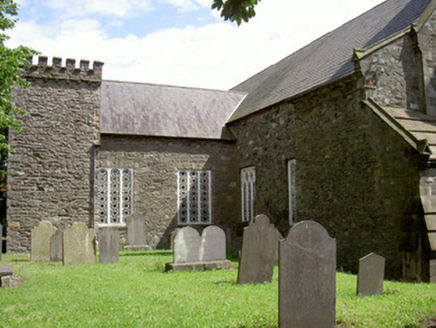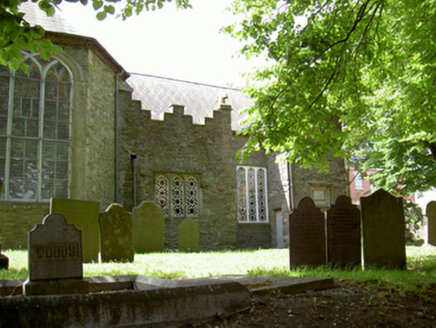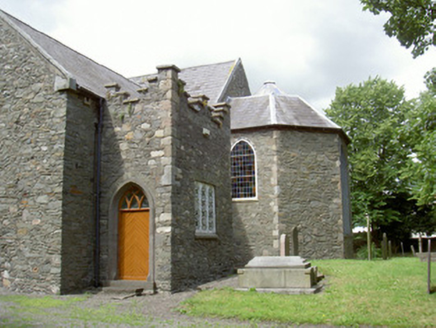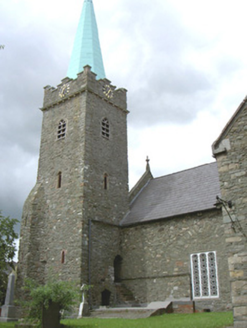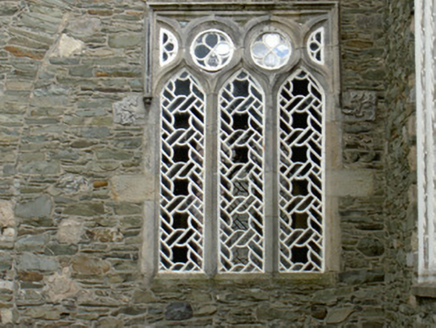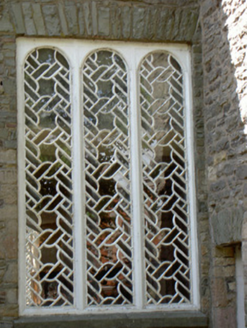Survey Data
Reg No
13702024
Rating
Regional
Categories of Special Interest
Archaeological, Architectural, Artistic, Historical, Social
Original Use
Church/chapel
In Use As
Church/chapel
Date
1750 - 1770
Coordinates
304842, 307755
Date Recorded
18/07/2005
Date Updated
--/--/--
Description
Freestanding gable-fronted Church of Ireland church, originally built c. 1400, extended c. 1650, remodelled by Francis Johnston c. 1760. Cruciform-plan, two-bays to nave, gable-fronted projecting porch to west elevation, baptistery to north-west corner, three-stage bell and clock tower to south-west surmounted by copper spire, double-gabled transepts to north with crenellated porch terminating in turrets, polygonal chancel. Pitched slate roof, sandstone tiles to porch, stone verge coping to gables; crenellated parapet and copper needle spire to tower; cast-iron gutters on corbelled eaves, circular cast-iron downpipes. Uncoursed rubble stone walling to tower and nave, coursed calp limestone elsewhere. Square-headed window openings to nave; pointed arch to crenellated porch (north), painted timber tracery windows having rope-motif glazing; pointed arch openings to west and east containing Y-tracery painted timber window, stained glass, flush sills. Pointed arch door opening to west, hood moulding with label stops, ashlar limestone surround, timber diagonally-sheeted double doors; pair of pointed arch door openings to north, tooled limestone surround, timber panelled double doors, painted timber traceried overlights. Church set in wooded graveyard, bounded by wrought-iron railings on limestone plinths.
Appraisal
Saint Nicholas' church is a fascinating jigsaw puzzle, comprising elements of fourteenth- seventeenth- and eighteenth-century church buildings, having been extended, damaged, rebuilt over the centuries and finally reworked by Francis Johnston, it achieves a remarkable harmony between its various elements. The early windows are especially attractive and features of artistic significance. The church is of huge importance to the town of Dundalk having been a site of continuous religious use for centuries, set back from the main street it is a fascinating reminder of the vicissitudes of that town's history.
